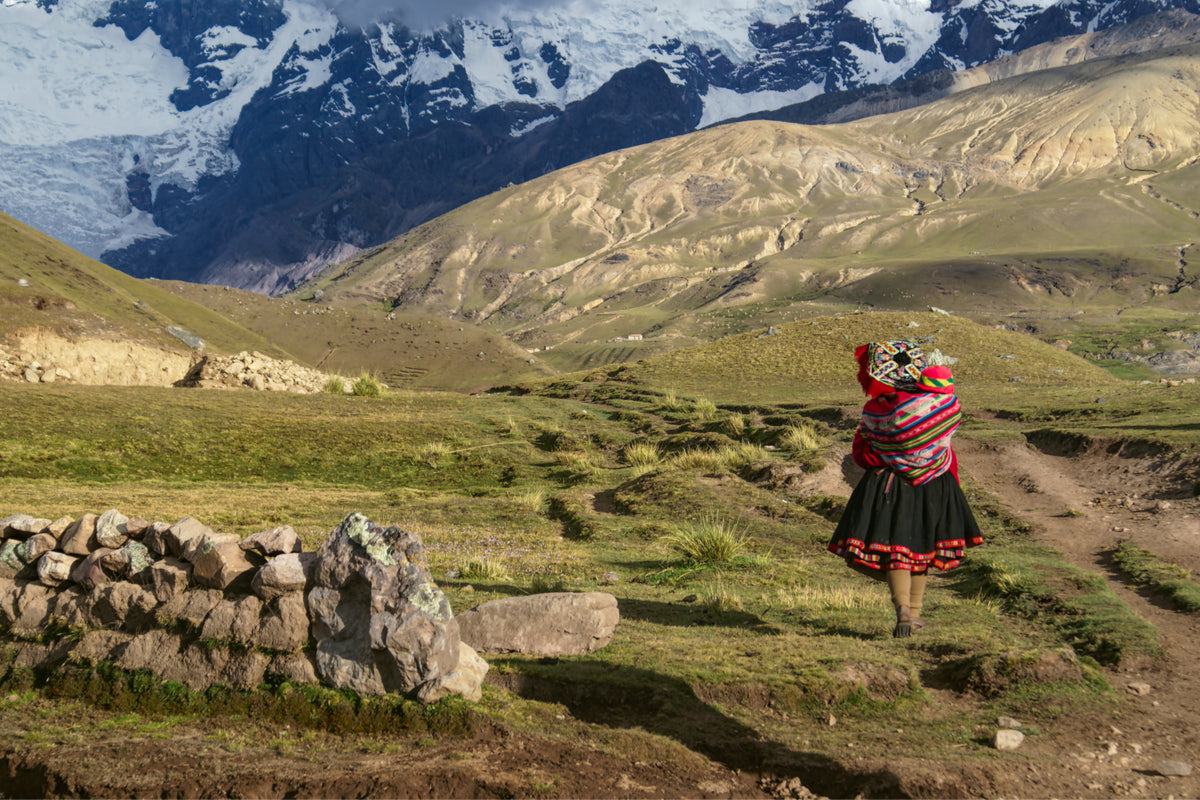The Role of Women in Inca Art: Creativity and Power
Inca art, a rich and multifaceted cultural expression, is distinguished not only by its technique and aesthetics but also by the crucial role women play in its creation and development. From the crafting of textiles to ceramics and goldsmithing, Inca women contribute significantly to artistic production, integrating their creativity and skills into every piece. This blog explores the diverse roles women occupy in Inca art, revealing their influence on the culture and identity of Andean society.
Weaving as Artistic Expression
Weaving is one of the most prominent forms of Inca art, where women are the primary artisans. From childhood, girls learn to weave as part of their cultural education, allowing them to express their creativity and connection to their roots. They use ancestral techniques and local materials, such as alpaca and llama wool, to create pieces that go beyond the utilitarian. Each textile carries symbols and meanings that reflect the Andean worldview, making women bearers of cultural memory. Through their hands, women not only produce textiles but also visual narratives that tell stories of their people.
Ceramics: A Legacy of Female Creativity
Inca ceramics is another field where women shine. They specialize in making utensils and ornaments, employing pottery techniques that have been passed down through generations. Each piece reflects the aesthetics and functionality of Inca society, showcasing both technical skill and feminine creativity. Women decorate their works with symbolic motifs that not only beautify but also convey deep messages about life and spirituality. Through their work in ceramics, women strengthen their position in the community, challenging gender stereotypes and reclaiming their space in the history of Inca art.
Goldsmithing and the Use of Precious Metals
In goldsmithing, women also play a fundamental role. They utilize their skill and knowledge to work with precious metals, creating jewelry and ritual objects that symbolize power and status. Inca goldsmithing is known for its complexity and beauty, with many pieces resulting from collaborative efforts among women who pass down their knowledge to one another. Through goldsmithing, women not only contribute to Inca artistic heritage but also establish connections between the material and the spiritual, as many objects are intended for religious ceremonies or offerings to deities.
Women as Living Museums of Tradition
Women serve as guardians of artistic traditions in Inca society. Through their work, they preserve and transmit knowledge about techniques and symbols that might otherwise be lost. This transmission of knowledge occurs in a communal environment, where women share their skills and experiences. Furthermore, the stories that accompany each technique are fundamental as they connect new generations with their cultural heritage. Thus, women become living museums that not only conserve art but also reinterpret it, ensuring that Inca creativity continues to evolve.
The Influence of Goddesses on Artistic Creation
Spirituality plays an important role in Inca art, and women are intrinsically linked to this dimension. Many Inca deities are represented as female figures, reinforcing the importance of femininity in Andean culture. Women often pay homage to these deities through their artistic creations, infusing their works with a sense of purpose and spiritual significance. In doing so, they not only honor the goddesses but also affirm their own creative power, transforming their art into a medium of connection with the divine.
Women's Participation in Art Trade
Inca women also play a vital role in the art trade. As they produce textiles, ceramics, and goldsmithing, many engage in selling and exchanging their creations. This aspect of commerce not only provides them with economic independence but also allows them to establish social networks and connections with other communities. The ability to negotiate and market their works highlights the importance of women in the Inca economy and their capacity to influence the artistic market. Thus, they become active agents within their society, challenging the limitations imposed by gender norms.
Resistance and Empowerment Through Art
Inca art becomes a means of resistance and empowerment for women. Through their creativity, they express their experiences, struggles, and aspirations. In a context where women often face challenges, art allows them to reclaim their voice and space in society. Artistic creations become vehicles for telling their stories, manifesting their emotions, and reflecting their identity. This process not only strengthens their self-esteem but also contributes to social transformation, inspiring future generations to continue the fight for recognition and equity.
The role of women in Inca art is fundamental and multifaceted. Through their participation in weaving, ceramics, goldsmithing, and trade, women not only showcase their creativity but also challenge stereotypes and reclaim their power in a predominantly male society. Their legacy endures, and their influence is felt in contemporary Andean culture. Recognizing and valuing the contribution of women to Inca art is essential to understanding the complexity of this civilization and its rich cultural heritage.
Sources Consulted
- Niles, Susan (1999). The Incas: A History of the Empire. New York: W. W. Norton & Company.
- De la Vega, John (2015). Textiles and Identity in the Inca Empire. London: University College London Press.
- Urton, Gary (2017). The History of the Andean People: An Anthropological Perspective. Boston: Cambridge University Press.
- D'Altroy, Teresa (2002). The Incas. Cambridge: Cambridge University Press.
- Coe, Michael (2015). Mexico: From the Olmecs to the Aztecs. New York: Thames & Hudson.
Article originally published on [8/5/2023], updated on [10/23/2024]


